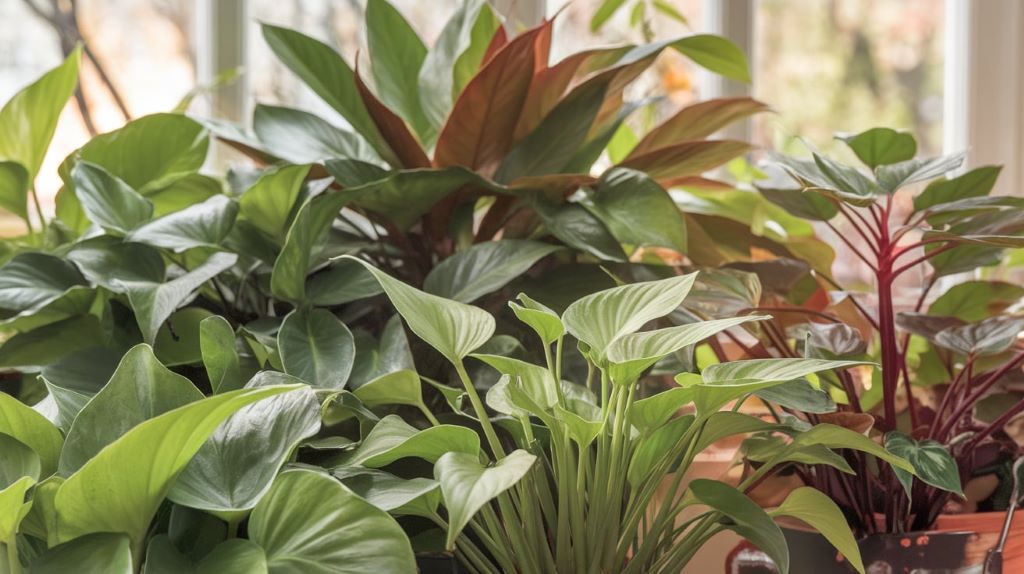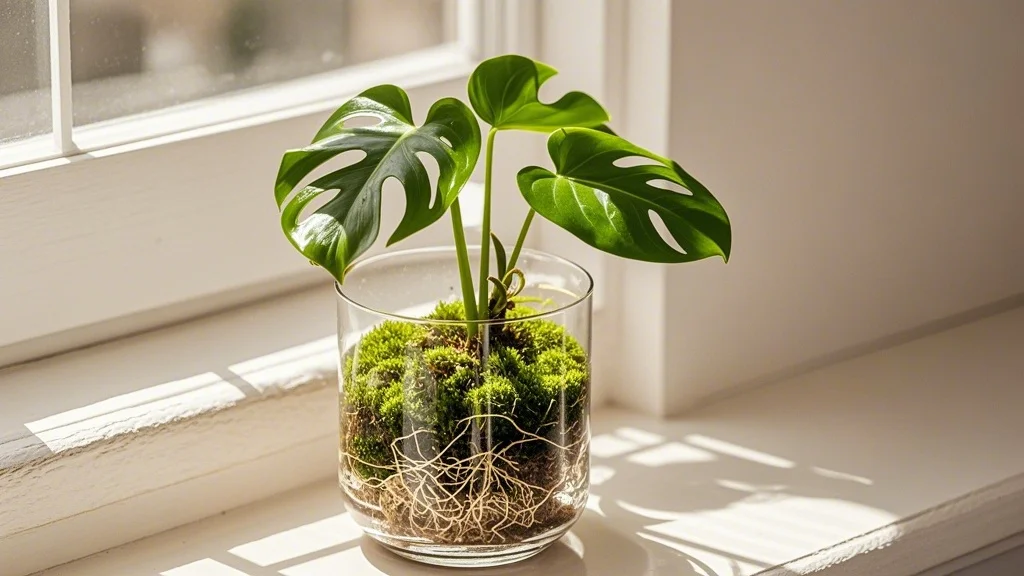Contents
- 1 Understanding the Seasonal Rhythm of Plant Propagation
- 2 Why Timing Matters in Propagation
- 3 Spring: The Prime Propagation Season
- 4 Summer: Strategic Propagation Opportunities
- 5 Fall: The Underrated Propagation Season
- 6 Winter: Specialized Propagation Opportunities
- 7 Plant-Specific Seasonal Propagation Guide
- 8 Optimizing Environmental Conditions by Season
- 9 Troubleshooting Seasonal Propagation Issues
- 10 Conclusion: Creating Your Year-Round Propagation Calendar
- 11 References and Further Reading
Understanding the Seasonal Rhythm of Plant Propagation
Propagation success isn’t just about technique—timing can make the difference between thriving new plants and disappointing failures. For intermediate plant enthusiasts looking to expand their collection strategically, recognizing the seasonal windows for propagation is a game-changer. Plants operate on natural cycles that affect their growth hormones, energy reserves, and recovery abilities, all of which impact propagation outcomes.
In this guide, we’ll explore how the changing seasons influence propagation success rates and identify the optimal times to take cuttings from different plant varieties. By aligning your propagation schedule with these natural rhythms, you’ll significantly increase your success rate and grow your urban jungle more efficiently.
Why Timing Matters in Propagation
The Science Behind Seasonal Success
Plants have evolved to respond to seasonal cues like day length, temperature, and light intensity. These environmental factors trigger specific hormonal changes that affect a plant’s ability to:
- Produce rooting hormones
- Allocate energy to new growth
- Heal wounds and develop calluses
- Generate new vascular connections
During active growth phases, plants typically have higher concentrations of natural auxins—hormones that stimulate root development—making these periods ideal for propagation. Conversely, during dormancy or stress periods, plants conserve energy and may struggle to support new growth from cuttings.
Key Seasonal Factors Affecting Propagation
- Light duration and intensity: Longer days stimulate growth hormones
- Temperature: Affects cellular activity and metabolism rates
- Humidity levels: Influences water loss and stress in cuttings
- Growth cycle stage: Determines available energy reserves
- Plant type: Different species have evolved with different optimal propagation windows
Spring: The Prime Propagation Season

Why Spring Excels for Most Plants
Spring represents nature’s ultimate restart button. As daylight hours increase and temperatures warm, plants exit dormancy and enter an active growth phase. This period offers several advantages for propagation:
- Plants are flush with growth hormones
- New growth provides ideal cutting material
- Increasing light supports photosynthesis in new cuttings
- Moderate temperatures reduce stress
- The long growing season ahead gives new plants time to establish
Best Plants for Spring Propagation
Soft-stemmed Houseplants:
- Pothos (Epipremnum aureum)
- Philodendron varieties
- Spider plants (Chlorophytum comosum)
- Wandering Jew (Tradescantia species)
Woody Perennials:
- Hydrangeas (take softwood cuttings in late spring)
- Roses (early spring softwood cuttings)
- Lavender
- Rosemary
Spring Propagation Timeline:
- Early Spring (March): Semi-hardwood cuttings of evergreen shrubs
- Mid-Spring (April): Softwood cuttings of most houseplants
- Late Spring (May): Herbaceous perennials and tender annuals
Spring Propagation Technique: Softwood Cuttings
Softwood cuttings—taken from new, green growth—root readily in spring:
- Select 4-6 inch stems with 2-3 leaf nodes
- Cut just below a node at a 45° angle
- Remove lower leaves, keeping 2-3 at the top
- Dip in rooting hormone (optional but beneficial)
- Plant in a light, well-draining propagation medium
- Maintain high humidity with a clear cover or bag
- Place in bright, indirect light
- Roots typically develop within 2-4 weeks
Summer: Strategic Propagation Opportunities
Summer Propagation Advantages and Challenges
Summer offers high light levels and warm temperatures that can accelerate rooting, but also presents challenges:
Advantages:
- Maximum photosynthetic potential
- Rapid cellular activity speeds healing and root development
- Many plants are actively growing
Challenges:
- Heat stress can dehydrate cuttings
- Some plants enter a summer slowdown
- Higher pest and disease pressure
- Increased maintenance requirements (watering)
Best Plants for Summer Propagation
Heat-Loving Plants:
- Succulents and cacti
- Tropical foliage plants (Monstera, Ficus, Dracaena)
- Coleus
- Begonias
Herbs:
- Basil
- Mint
- Oregano
- Sage
Summer Propagation Timeline:
- Early Summer (June): Semi-hardwood cuttings of shrubs
- Mid-Summer (July): Succulents and cacti
- Late Summer (August): Preparation for fall-rooting plants
Summer Technique: Succulent Leaf and Stem Propagation
Succulents propagate exceptionally well in summer’s warm, dry conditions:
- For leaf propagation: Gently twist leaves from the stem, ensuring a clean break
- Allow leaves or stem cuttings to callus for 2-7 days in a dry, shaded location
- Place callused material on well-draining cactus soil
- Mist occasionally rather than watering deeply
- Keep in bright, indirect light
- Roots and tiny plantlets will form in 2-6 weeks
- Reduce water in extreme heat to prevent rot
Pro Tip: For summer propagation, consider morning work when plants are hydrated but not heat-stressed.
Fall: The Underrated Propagation Season
Why Fall Works Well for Certain Plants
Fall offers unique advantages that many urban gardeners overlook:
- Plants are preparing for dormancy, storing energy reserves
- Cooler temperatures reduce transpiration stress
- Root growth often continues even as top growth slows
- Lower pest and disease pressure
- Reduced maintenance requirements
Best Plants for Fall Propagation
Woody Ornamentals:
- Evergreen shrubs
- Deciduous trees and shrubs (after leaf drop)
- Conifers
- Roses (hardwood cuttings)
Hardy Perennials:
- Geraniums (Pelargonium)
- Sedum
- Heuchera
- Dianthus
Fall Propagation Timeline:
- Early Fall (September): Semi-hardwood cuttings of evergreens
- Mid-Fall (October): Root division of perennials
- Late Fall (November): Hardwood cuttings after leaf drop
Fall Technique: Hardwood Cuttings
Hardwood cuttings—taken from mature, woody stems—root best in fall and early winter:
- Select 6-12 inch sections of mature, woody stems
- Make a straight cut just below a node at the bottom
- Make a slanted cut just above a node at the top (helps identify which end is up)
- Remove all leaves for deciduous plants
- For evergreens, keep a few leaves at the top
- Dip in rooting hormone (particularly beneficial for hardwood cuttings)
- Plant 2/3 of the cutting in well-draining medium
- Place in a sheltered location or cold frame
- Roots develop slowly over winter, with plants ready by spring
Winter: Specialized Propagation Opportunities
Winter Propagation Considerations
While winter seems counterintuitive for propagation, it offers specific advantages:
- Dormant plants can be propagated with minimal stress
- Indoor conditions can be controlled precisely
- More time available for urban gardeners to focus on propagation
- Preparation for spring planting
Best Plants for Winter Propagation
Indoor Tropicals:
- African violets
- Christmas cactus (Schlumbergera)
- Snake plants (Sansevieria)
- ZZ plants (Zamioculcas)
Dormant Woody Plants:
- Fruit trees
- Grapes
- Figs
- Roses
Winter Propagation Timeline:
- Early Winter (December): Hardwood cuttings of deciduous plants
- Mid-Winter (January): Indoor tropicals under grow lights
- Late Winter (February): Early preparation for spring propagation
Winter Technique: Indoor Water Propagation
Water propagation works well for many houseplants during winter months:
- Take 4-6 inch cuttings with at least 2-3 nodes
- Remove lower leaves, keeping 2-3 at the top
- Place in clean water, ensuring nodes are submerged
- Position in bright, indirect light
- Change water weekly to prevent bacterial growth
- Once roots reach 1-2 inches, transfer to soil
- Use supplemental grow lights if natural light is limited
Pro Tip: Winter propagation often benefits from bottom heat (70-75°F) to encourage root development despite cooler ambient temperatures.
Plant-Specific Seasonal Propagation Guide
Foliage Houseplants
| Plant Type | Optimal Season | Propagation Method | Notes |
|---|---|---|---|
| Pothos/Philodendron | Year-round (best in spring) | Stem cuttings | Water or soil propagation both effective |
| Monstera | Spring/Summer | Stem cuttings with nodes | Requires higher humidity |
| Snake Plant | Spring/Summer | Leaf cuttings | Allow cuts to callus before planting |
| ZZ Plant | Spring | Leaf or stem cuttings | Very slow to root; patience required |
| Ficus (Rubber Plant) | Spring/Early Summer | Air layering or top cuttings | Benefits from rooting hormone |
Flowering Plants
| Plant Type | Optimal Season | Propagation Method | Notes |
|---|---|---|---|
| African Violet | Year-round | Leaf cuttings | Best under controlled indoor conditions |
| Begonia | Spring/Summer | Stem or leaf cuttings | High humidity essential |
| Geranium | Late Summer/Early Fall | Stem cuttings | Allow cuttings to dry slightly before planting |
| Hydrangea | Late Spring/Early Summer | Softwood cuttings | Take from non-flowering stems |
| Roses | Fall/Winter | Hardwood cuttings | Take after flowering has finished |
Woody Ornamentals
| Plant Type | Optimal Season | Propagation Method | Notes |
|---|---|---|---|
| Boxwood | Fall | Semi-hardwood cuttings | Slow to root but reliable |
| Azalea | Mid-Summer | Semi-hardwood cuttings | Requires acidic propagation medium |
| Holly | Fall | Semi-hardwood cuttings | Can take 3+ months to root |
| Juniper | Fall/Winter | Hardwood cuttings | Benefits from wounding the base |
| Magnolia | Summer | Semi-hardwood cuttings | Use current season’s growth |
Optimizing Environmental Conditions by Season
Spring Propagation Environment
- Light: Bright, indirect light; morning sun ideal
- Temperature: 65-75°F (18-24°C)
- Humidity: 60-70%
- Special Considerations: Protect new cuttings from strong spring winds
Summer Propagation Environment
- Light: Filtered light; protect from intense midday sun
- Temperature: 70-85°F (21-29°C); provide cooling if temperatures exceed 90°F
- Humidity: 50-70%; may need humidity trays or regular misting
- Special Considerations: Increase air circulation to prevent fungal issues
Fall Propagation Environment
- Light: Maximum available light as days shorten
- Temperature: 60-70°F (15-21°C)
- Humidity: 50-60%
- Special Considerations: Protect outdoor cuttings from early frosts
Winter Propagation Environment
- Light: Supplemental grow lights (12-14 hours daily)
- Temperature: 65-70°F (18-21°C); bottom heat beneficial
- Humidity: 40-50% indoors; higher for tropical species
- Special Considerations: Avoid placing near heating vents or drafty windows
Troubleshooting Seasonal Propagation Issues
Common Spring Issues
- Problem: Cuttings rot before rooting Solution: Reduce watering frequency; ensure good air circulation
- Problem: Slow root development Solution: Check for appropriate temperature; consider bottom heat
Common Summer Issues
- Problem: Cuttings wilt despite adequate water Solution: Increase humidity; reduce leaf surface by trimming larger leaves
- Problem: Fungal or bacterial infections Solution: Improve air circulation; water in morning only; consider fungicide
Common Fall Issues
- Problem: Hardwood cuttings fail to callus Solution: Ensure clean cuts; apply rooting hormone; maintain consistent moisture
- Problem: Leaf drop on evergreen cuttings Solution: Reduce leaf surface area; maintain higher humidity
Common Winter Issues
- Problem: Mold growth in water propagation Solution: Change water more frequently; add a drop of hydrogen peroxide
- Problem: Cuttings remain dormant without rooting Solution: Provide bottom heat; ensure adequate light duration

Conclusion: Creating Your Year-Round Propagation Calendar
Understanding the seasonal rhythms of plant propagation transforms a hit-or-miss activity into a strategic practice with predictable results. By aligning your propagation efforts with these natural cycles, you’ll maximize your success rate and grow your urban garden more efficiently.
Consider creating a personal propagation calendar based on your specific plant collection, noting:
- Which plants to propagate in each season
- When to prepare propagation materials
- Expected rooting timeframes
- Seasonal adjustments to environmental conditions
Remember that while these guidelines provide a strong foundation, local conditions and indoor environments may allow for flexibility. Pay attention to your plants’ growth patterns—they’ll often signal when they’re ready to be propagated through new growth, aerial roots, or other indicators.
With practice and observation, you’ll develop an intuitive sense of timing that complements these seasonal guidelines, allowing you to multiply your plant collection successfully throughout the year.
Happy propagating!
Looking for the right tools to support your seasonal propagation efforts? Visit OwnGardens.com for our curated selection of propagation stations, rooting hormones, and specialized growing media designed for urban plant enthusiasts.
References and Further Reading
- American Horticultural Society Plant Propagation: The Fully Illustrated Plant-by-Plant Manual of Practical Techniques
- The Reference Manual of Woody Plant Propagation: From Seed to Tissue Culture
- Royal Horticultural Society: Propagating Plants








